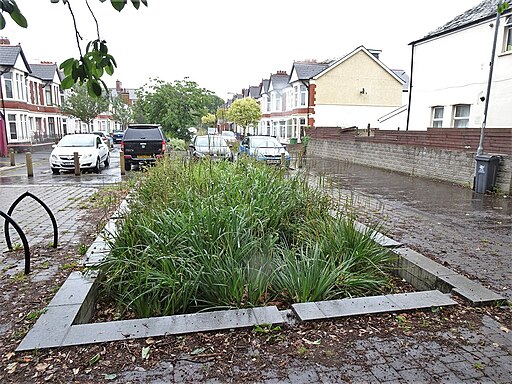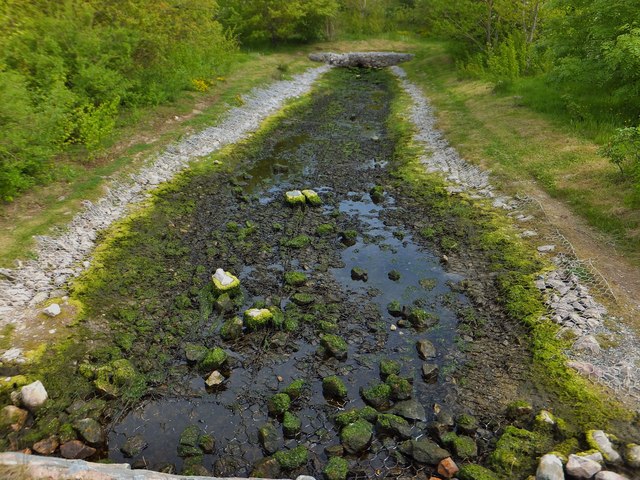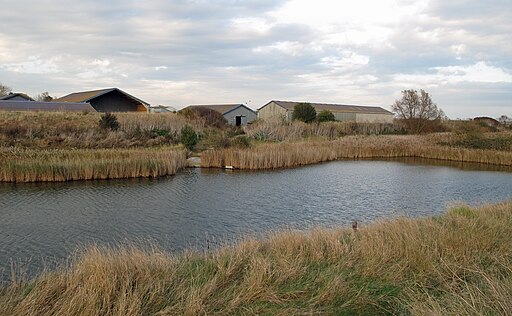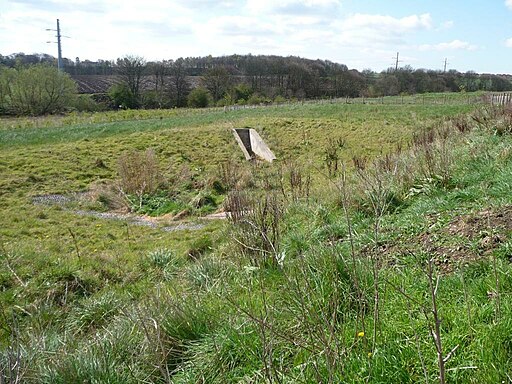Sustainable Drainage Systems, SuDS for short, have been increasingly visible in large projects recently due to their ability to prevent flooding in newly built areas. This article explains what SUDS are and how they are contstructed.
Drainage systems in general are a form of water management, usually referring to the removal of water from the built environment such as cities. High rainfall can cause flooding in urban areas due to a combination of the following factors:
- Rainwater does not permeate into the soil due to asphalt, concrete, or other surface cover;
- Rainwater is not retained in natural areas such as ponds or wetlands;
- Rainwater runs freely, without being slowed down by ground cover and trees.
These factors can be addressed separately, but what unites them is that they make it easier for the water to gather in one place. That is the simplest explanation of flooding: too much water in a short time.
Drainage Systems
There are two main options for drainage systems. One is direct discharge into surface water such as the sea or a lake, river, or stream. This option can cause water level rise in rivers, streams and lakes, causing flooding elsewhere. This option is popular in many North American urbanised spaces as well as large parts of the rest of the world. A second option is drainage through the existing sewage system, by street level gullies that are connected to the main sewage network. This option is popular in the UK and some parts of Europe, because of the old sewage networks that were built to have rain aid the transport of sewage by gravity.
In almost every case, sewage systems end up discharing their treated or untreated flows into nearby rivers, lakes, or seas. This not only causes direct pollution from (mirco)plastics and pesticides, but it also causes an increase in nutrients in the water that can cause algae to bloom at a large scale, killing other marine life like fish and native plants.
Sustainable Drainage Systems
SuDS is simply a generic name for more sustainable alternatives to the drainage systems mentioned above. SuDS are normally installed with a focus on several aspects:
- Reduce flooding: by slowing down the water. Allowing water to form pools, fill up channels, and generally get slowed down by vegetation, reduces the risk of flooding. Heavy rains can only cause flooding if the surface does not have enough capacity to store of divert the water.
- Reduce particulate pollution: by removing larger solids and microparticles such as plastics from car tyres. Larger particles get stuck on soil or vegetation, while smaller particles have a chance to settle due to the water being slowed down.
- Reduce chemical pollution: by slowing down water, giving sunlight a chance to break down certain pollutants such as pesticides and certain hydrocarbons. And by allowing plants and soil microbes to take up and break down other pullutants, such as heavy metals and some pesticides.
- Increase biodiversity: by implementing native elements into the constructed wetland, designers can allow for an increase in insect and vertebrate populations, forming the basis for a healthier local ecosystem. It is often underestimated how important this biodiversity is in the functioning of the drainage system, especially with regards to water infiltration, soil health, and removal of pullutants.
Construction Elements of SuDS
SuDS are constructed by using multiple elements to slow down the flow of water that would otherwise rain down a hard surface such as a road or pavement. We will go over a number of examples, followed by some case studies.
A local sustainable drainage system, with plants covering open soil which allows for water permeation into groundwater. This 20cm deep area (2m x 6m) can hold 2500 Litres of water which is enough to cover heavy rainfall on the surrounding area (30m x 50m) for about an hour.
Image credit Sionk, CC BY-SA 4.0 <https://creativecommons.org/licenses/by-sa/4.0>, via Wikimedia Commons


A simple example of a drainage channel that is designed to slow down the flow of water. This type of channel will generally have some water in it, but the low gradient slope allows for a lot water to be stored as the water level rises, while the rough surface of the channel promotes a slower flow through it.
Image credit Drainage system by Richard Hoare, CC BY-SA 2.0 <https://creativecommons.org/licenses/by-sa/2.0>, via Wikimedia Commons
A marsh-type drainage catchent area. This type of drainage system is essentially a larger constructed wetland that can have a varying water level, allowing for stormwater drainage in summer and autumn, and increase water permeation in winter and spring. It also provides an important habitat for native plants and birds.
Image credit Drainage system near Marsh Farm Country Park by Roger Jones, CC BY-SA 2.0 <https://creativecommons.org/licenses/by-sa/2.0>, via Wikimedia Commons


A sloped catchment area, allowing runoff water from a nearby urban area, through the concrete tube, to permeate into the soil rather than being released into nearby waterways.
Image credit Sustainable drainage system, Sharp Lane Plantations by Christine Johnstone, CC BY-SA 2.0 <https://creativecommons.org/licenses/by-sa/2.0>, via Wikimedia Commons
Case Studies
A good theoretical case study using Autodesk’s InfoDrainage program is the following: The design study looked at the impact of using green spaces as storm drain outlets, and found that gardens, parks, and other green spaces can make a significant difference in the flood resistence of urbanised area. Better drainage systems can reduce flood risk but also mitigate the levels of pollution of storm water into natural waterways such as rivers, lakes and seas. The full case study can be found here: InfoDrainage Case Study.
A further practical case study is one done in Herefordshire, England. A medical practice building wanted a more sustainable wetland-type cartchment for rainwater, which was installed. The very light gradient slopes were installed and planted with marginal wetland species that thrive in both flooded and semi-dry environments. The designer installed a permeable asphalt parking area that lets water run through and filters out some larger and smaller solids. The complete design consists of the permeable pavement parking, a set of swales (channels with vegetation) to collect runoff water, a storage area that promotes infiltration to groundwater, and a controlled overflow into the nearby stream to minimise solids entering the water. The full details can be found in this link: Susdrain Case.
Concluding Remarks
Sustainable Drainage Systems are a key element to protect urban areas from flooding, especially with already changing rain patterns causing heavier rain in a shorter period of time. They are designed to slow down rainwater, giving the created wetland time to remove solid particles, break down or store pollutants, and reduce flooding risk by not overloading local surfaces or streams with runoff water.